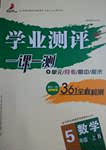ΧβΡΩΡΎ»ί
ΓΨΧβΡΩΓΩΦΌΕ®”Δ”οΩΈ…œάœ Π“Σ«σΆ§Ήά÷°ΦδΫΜΜΜ–όΗΡΉςΈΡΘ§«κΡψ–όΗΡΡψΆ§Ήά–¥ΒΡ“‘œ¬ΉςΈΡΓΘΈΡ÷–Ι≤”–10¥Π”ο―‘¥μΈσΘ§ΟΩΨδ÷–ΉνΕύ”–ΝΫ¥ΠΓΘΟΩ¥Π¥μΈσΫω…φΦΑ“ΜΗωΒΞ¥ ΒΡ‘ωΦ”ΓΔ…Ψ≥ΐΜρ–όΗΡΓΘ
‘ωΦ”ΘΚ‘Ύ»±¥ ¥ΠΦ”“ΜΗω¬©Ή÷ΖϊΚ≈Θ®ΓΡΘ©Θ§≤Δ‘ΎΤδœ¬Οφ–¥≥ωΗΟΦ”ΒΡ¥ ΓΘ
…Ψ≥ΐΘΚΑ―Εύ”ύΒΡ¥ ”Ο–±œΏΘ®©ÖΘ©Μ°ΒτΓΘ
–όΗΡΘΚ‘Ύ¥μΒΡ¥ œ¬Μ°“ΜΚαœΏΘ§≤Δ‘ΎΗΟ¥ œ¬Οφ–¥≥ω–όΗΡΚσΒΡ¥ ΓΘ
ΉΔ“βΘΚ
1. ΟΩ¥Π¥μΈσΦΑΤδ–όΗΡΨυΫωœό“Μ¥ ΘΜ
2. ÷Μ‘ –μ–όΗΡ10¥ΠΘ§Εύ’ΏΘ®¥”ΒΎ11¥ΠΤπΘ©≤ΜΦΤΖ÷ΓΘ
I saw a example of kindness during the Special Olympic Games in 1968. Kim, a severe disabled boy, took part in the 50-meter dash. He was racing against two other athlete who were in wheelchairs. In the race, Kim quickly moved ahead the other two. Ten meters from the finish line, he has turned to see how the others were doing. The other boy was pushed forward with his hands. The girl had turned her wheelchair around, but he was stuck against the wall. Kim stopped, went back, but pushed the girl across the finish line. The boy in the wheelchair won the race, and the girl comes in second place. Kim lost the race. However, the crowd, included me, didnΓ·t think so, so we all gave him a cheer for his kindness.
ΓΨ¥πΑΗΓΩ1.ΒΎ“ΜΨδ: a Γζ an
2.ΒΎΕΰΨδ: severe Γζ severely
3.ΒΎ»ΐΨδ: athlete Γζ athletes
4.ΒΎΥΡΨδ: ahead ΓΡ the Γζ of
5.ΒΎΈεΨδ:»ΞΒτhas
6.ΒΎΝυΨδ: pushed Γζ pushing
7.ΒΎΤΏΨδ: he Γζ she
8.ΒΎΑΥΨδ: but Γζ and
9.ΒΎΨ≈Ψδ: comes Γζ came
10.ΒΎ °“ΜΨδ: included Γζ including
ΓΨΫβΈωΓΩ1.ΒΎ“ΜΨδ: a Γζ anΩΦ≤ι≤ΜΕ®ΙΎ¥ Θ§example «“‘‘Σ“τΕΝ“τΩΣ ΦΒΡΒΞ¥ ”ΠΗΟ”Ο≤ΜΕ®ΙΎ¥ anΘ§Ι ΫΪΒΎ“ΜΨδaΗΡΈΣanΓΘ
2.ΒΎΕΰΨδ: severe Γζ severelyΩΦ≤ι–Έ»ί¥ ΚΆΗ±¥ ΒΡ«χ±πΘ§―œ÷Ί≤–Φ≤ΒΡΡ–ΚΔa severely disabled boyΘ§”ΟΗ±¥ severely–ό ΈdisabledΘ§Ι ΫΪΒΎΕΰΨδsevereΗΡΈΣseverelyΓΘ
3.ΒΎ»ΐΨδ: athlete Γζ athletesΩΦ≤ιΟϊ¥ ΒΞΗ¥ ΐΘ§two other athletesΝμΆβΝΫΟϊ‘ΥΕ·‘±Θ§”ΟΟϊ¥ Η¥ ΐ–Έ ΫΘ§Ι ΫΪΒΎ»ΐΨδathleteΗΡΈΣathletesΓΘ
4.ΒΎΥΡΨδ: ahead ΓΡ the Γζ ofΩΦ≤ιΙΧΕ®¥ν≈δΘ§ahead of..‘ΎΓ≠«ΑΟφΘ§Ι ΒΎΥΡΨδaheadΚσ±ΏΦ”ofΓΘ
5.ΒΎΈεΨδ:»ΞΒτhasΩΦ≤ι ±Χ§Θ§’ϊΤΣΈΡ’¬”ΟΙΐ»Ξ ±Χ§Θ§Ι ΫΪΒΎΈεΨδhas»ΞΒτΓΘ
6.ΒΎΝυΨδ: pushed Γζ pushingΩΦ≤ι”οΧ§Θ§Ρ–ΚΔ’ΐ‘ΎΖήΝΠœρ«ΑΘ§”ΟΫχ–– ±Χ§÷ςΕ·”οΧ§Θ§≤Μ”Ο±ΜΕ·”οΧ§Θ§Ι ΫΪΒΎΝυΨδpushedΗΡΈΣpushingΓΘ
7.ΒΎΤΏΨδ: he Γζ sheΩΦ≤ι¥ζ¥ Θ§≤ΔΝ–Ν§¥ but«Α±ΏΥΒΒΫ≈°ΚΔ–ΐΉΣ¬÷“ΈΘ§Κσ±Ώ”ΠΗΟΥΒΥΐ±ΜΩ®‘ΎΝΥ«ΫΡ«ΕυΘ§Ι ΫΪΒΎΤΏΨδheΗΡΈΣsheΓΘ
8.ΒΎΑΥΨδ: but Γζ andΩΦ≤ιΝ§¥ Θ§KimΆΘΝΥœ¬ά¥Θ§Α―≈°ΚΔΆΤΒΫΝΥ÷’ΒψΘ§ «≤ΔΝ–ΙΊœΒΘ§Ι ΫΪΒΎΑΥΨδbutΗΡΈΣandΓΘ
9.ΒΎΨ≈Ψδ: comes Γζ cameΩΦ≤ι ±Χ§Θ§’ϊΤΣΈΡ’¬ «Ιΐ»Ξ ±Χ§Θ§Ι ΫΪΒΎΨ≈ΨδcomesΗΡΈΣcameΓΘ
10.ΒΎ °“ΜΨδ: included Γζ includingΩΦ≤ιΫι¥ Θ§Αϋά®Έ“including meΘ§Ι ΫΪΒΎ °“ΜΨδincludedΗΡΈΣincludingΓΘ

 ΜνΝΠΩΈ ±Ά§≤ΫΝΖœΑ≤αœΒΝ–¥πΑΗ
ΜνΝΠΩΈ ±Ά§≤ΫΝΖœΑ≤αœΒΝ–¥πΑΗ ―ß“Β≤βΤά“ΜΩΈ“Μ≤βœΒΝ–¥πΑΗ
―ß“Β≤βΤά“ΜΩΈ“Μ≤βœΒΝ–¥πΑΗ